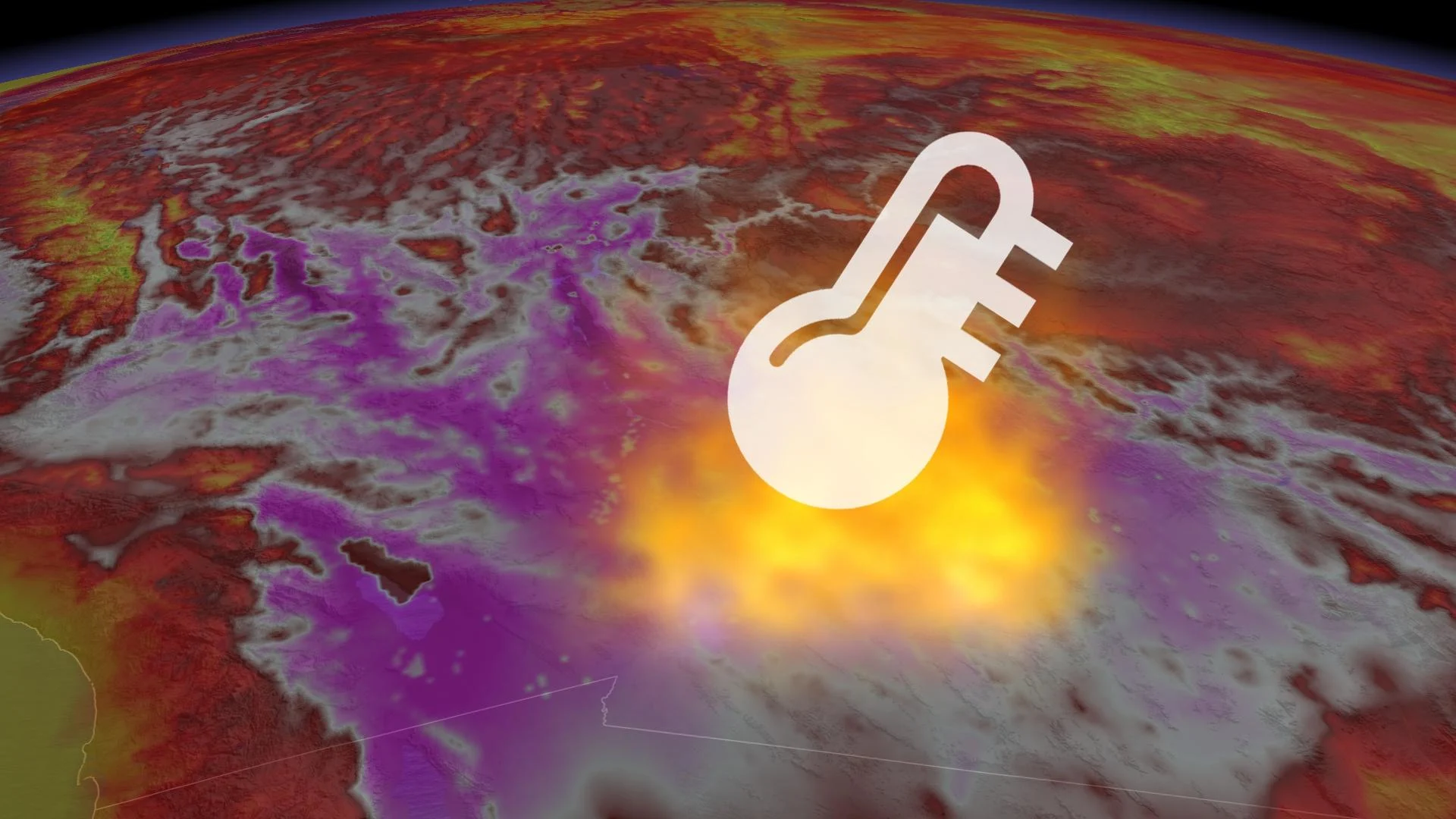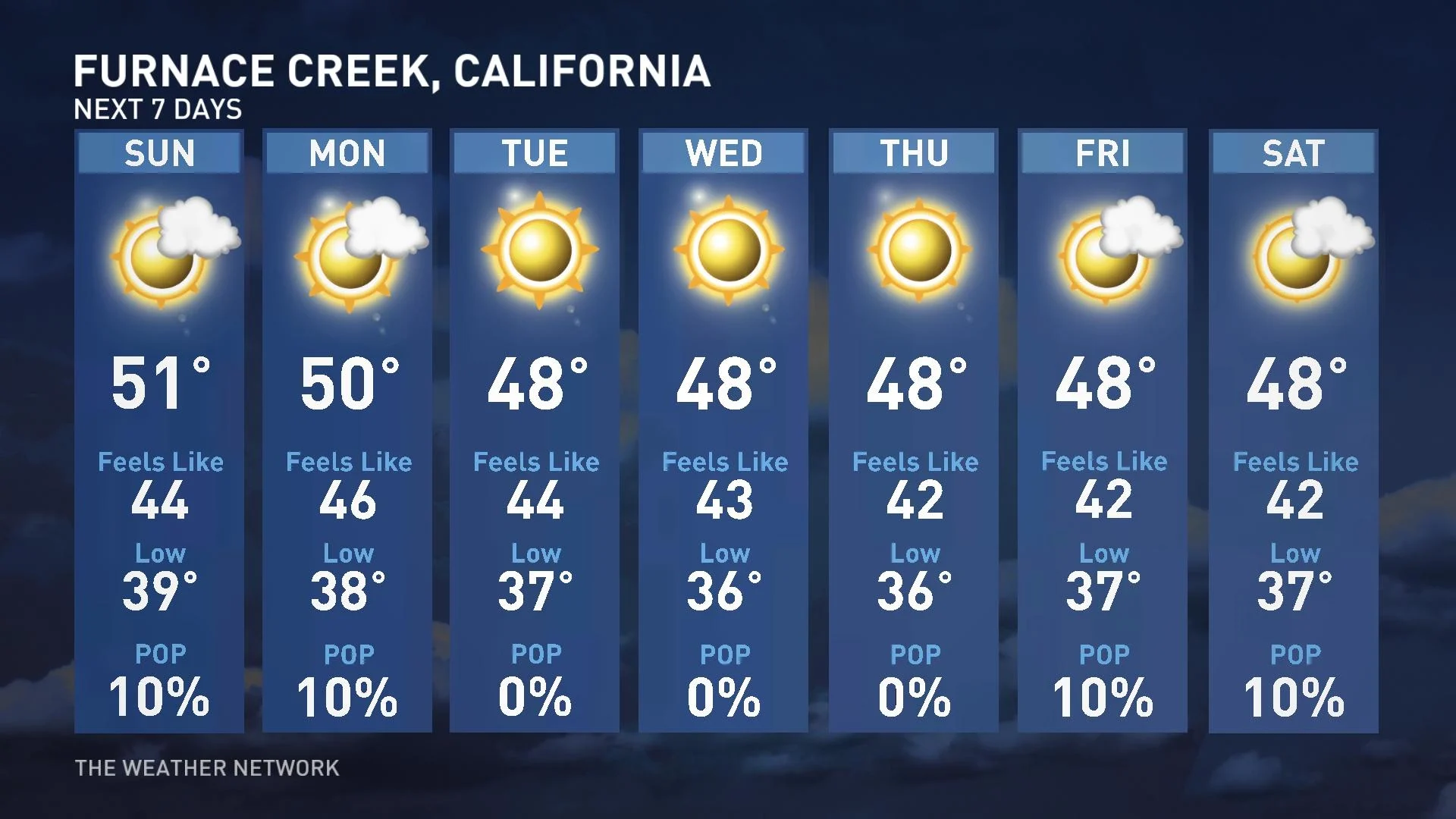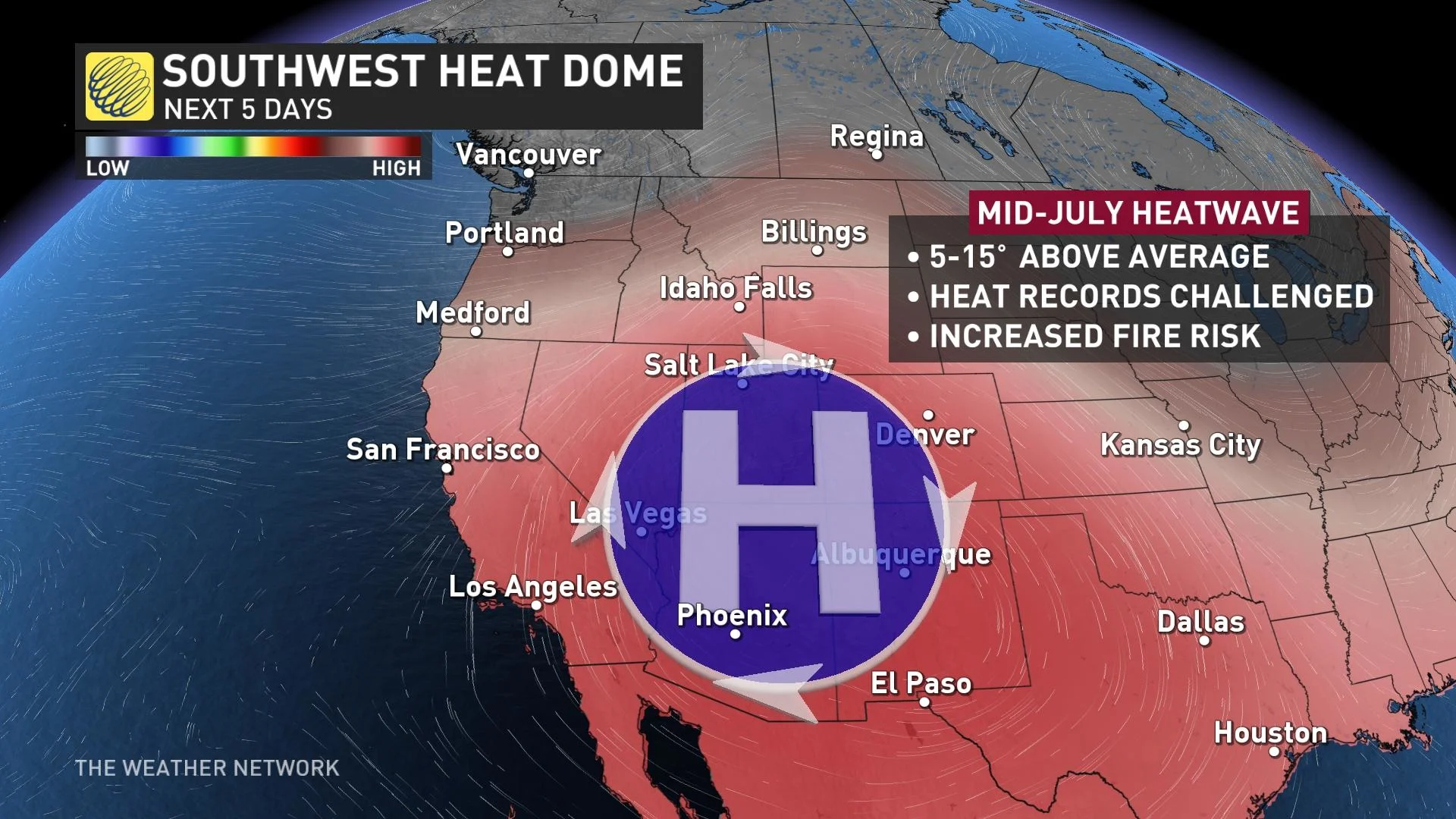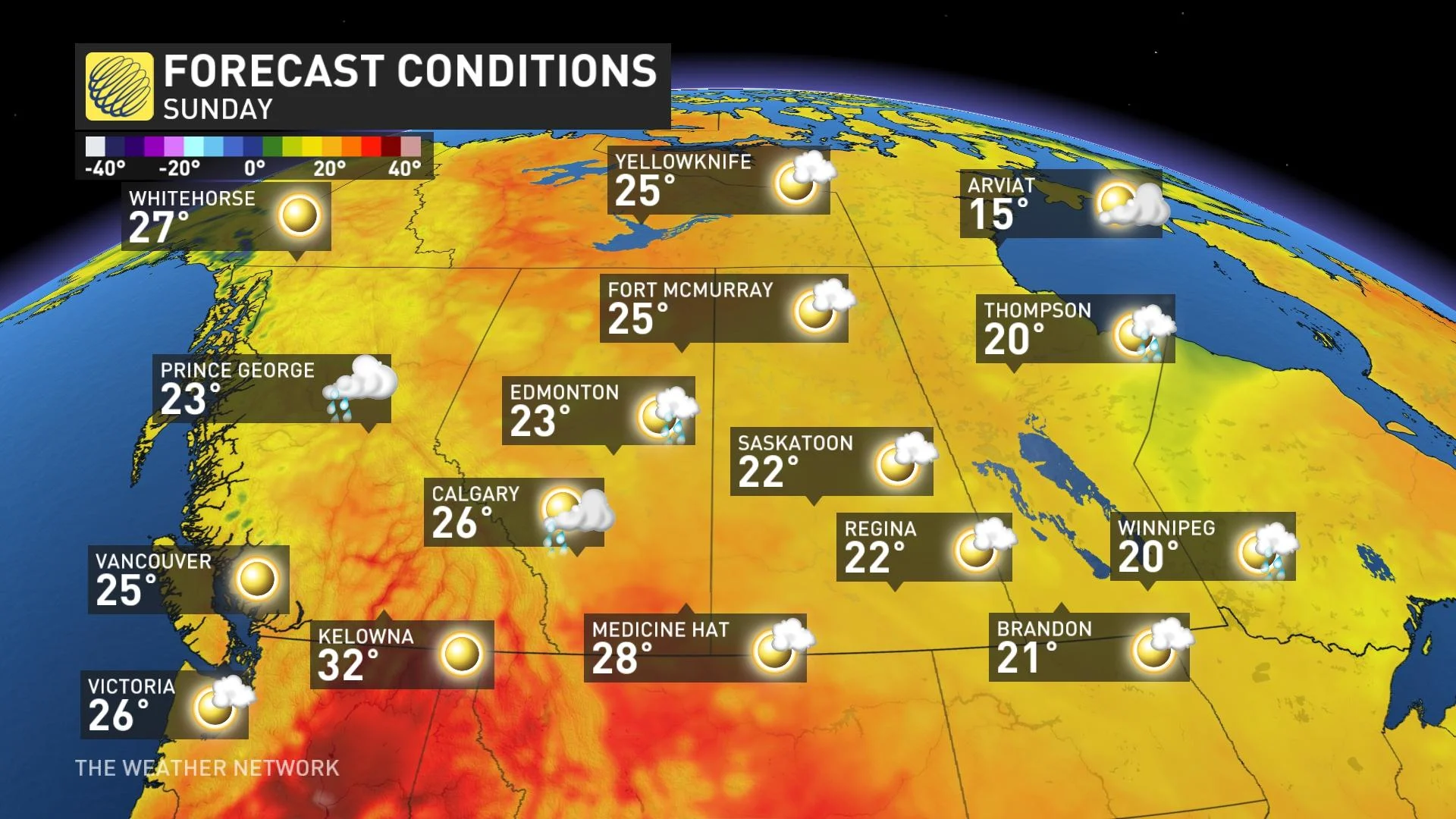
Historic desert heat wave’s influence reaches all the way to Canada
The ridge driving an unprecedented stretch of life-threatening heat in the southwestern United States is large enough to bring the heat to Canada
It’s a heat wave for the ages in one of the hottest parts of the world, and the ridge generating the extreme temperatures is so steep that it’s influencing the weather over parts of Canada this weekend.
The deserts of the southwestern United States rank among the hottest places on Earth, with daytime highs soaring above 40°C on a normal July day.
But this isn’t normal July weather.
DON'T MISS: How have emissions contributed to the current heat records?
An intense heat dome locked over the desert southwest has allowed temperatures to soar for weeks now, a seemingly endless heat wave that’s peaking this weekend with searing high temperatures that will easily crack 50°C in spots.
Life-threatening heat without an end in sight
The U.S. National Weather Service expects Death Valley, California, to reach almost 54°C on Sunday afternoon. Death Valley is the hottest place in the western hemisphere, and it holds the official world record for the highest temperature ever recorded, with a (somewhat disputed) reading of 56.7°C on July 10, 1913.
For perspective, Canada’s all-time high temperature of 49.6°C occurred in Lytton, British Columbia, during the awful heat dome in June 2021.

Widespread heat warnings blanket much of the western United States away from the cooling influence of the Pacific Ocean. Forecasters with the NWS aren’t treading lightly when it comes to the severity of the situation.
“Several days of extreme heat will result in a major concern for life-threatening heat illnesses for anyone outside for an extended period,” the NWS said in an excessive heat warning outside of Las Vegas, Nevada.
Forecasters added: “Anyone who may encounter car trouble could be facing a life threatening situation, especially where phone signal prohibits calling for help.”
WATCH: How do we know when weird weather is caused by climate change?
Historic heat shattering unthinkable records
The records keep piling up. Phoenix, Arizona, is on track to break its record for the most consecutive days with high temperatures at or above a cool 43.3°C, which is an even 110 degrees on the Fahrenheit scale. The city’s previous record was 18 days of highs hitting or exceeding that mark during a blazing heat wave in June 1974.
Phoenix recently tied its second-hottest low temperature on record, with the morning low only dipping to 35°C on Thursday, July 13.

RELATED: All-time global heat record smashed three days in a row
Things get even worse when you consider that Phoenix hasn’t recorded a temperature below 30°C since the early morning hours on July 1—making for more than two solid weeks of nights hotter than the average high in Toronto in the middle of July.

El Paso, Texas, a city of nearly 700,000 people located on the far western tip of the state, has hit the symbolic ‘century mark’ of 100°F (37.7°C) for an astounding 29 days in a row as of Saturday, July 15.
Before this prolonged heat wave, El Paso had never seen more than 23 consecutive days with triple-digit high temperatures. Forecasters expect highs to meet or exceed that mark for at least another week, if not longer.
The ridge bringing the heat extends all the way to Canada
Ridges of high pressure aloft are the culprit behind summer’s worst heat waves because they force air to sink toward the ground. Sinking air compresses and warms up as it descends toward the ground, exacerbating the bright July sunshine and local topography to send temperatures soaring to unbearable levels.

The ridge parked over the southwestern U.S. this weekend is very close to record-breaking intensity itself, according to local forecasters, allowing the extreme heat to sustain itself at levels never before measured in this part of the world.
While the worst of the heat is centred over the deserts of the southwest, this ridge’s influence stretches over most of the western U.S., poking so far north that it’s pushed above-seasonal heat into Western Canada.

It’s been unusually toasty across British Columbia this weekend, where temperatures are running more than 5 degrees above seasonal. Vancouver climbed up to about 27°C on Saturday afternoon, where an average high is about 21°C in the middle of July. Farther inland, daytime highs will climb into the lower 30s throughout the Okanagan again on Sunday.
The heat will slide onto the western Prairies by the beginning of the week, with temperatures in the upper 20s and lower 30s in southern Alberta on Sunday and Monday.
Temperatures will climb across Western Canada once again later in the week as another ridge builds over the region.










